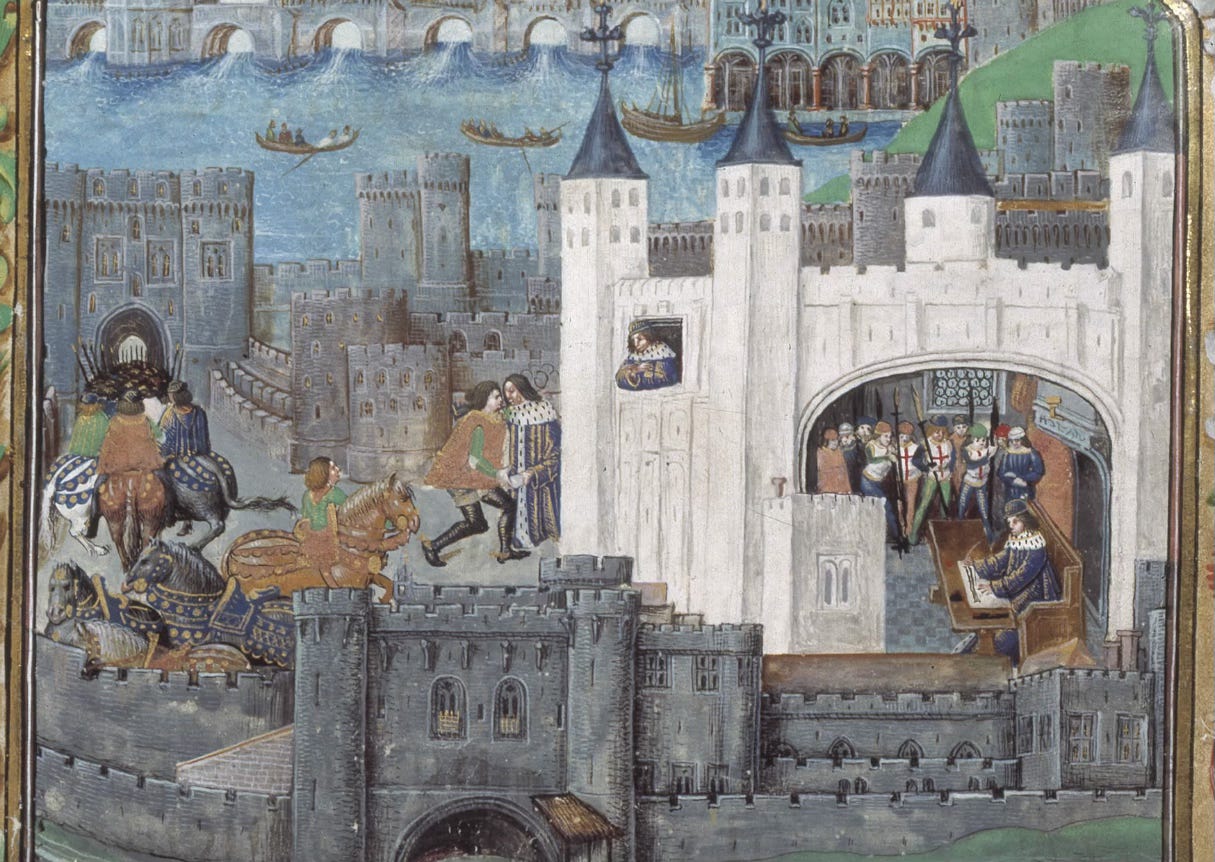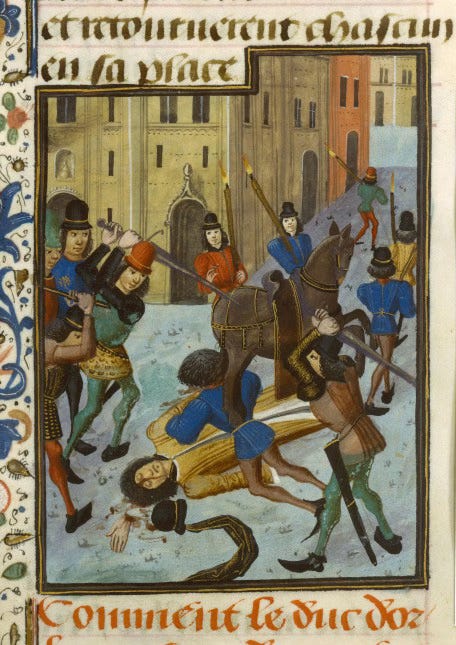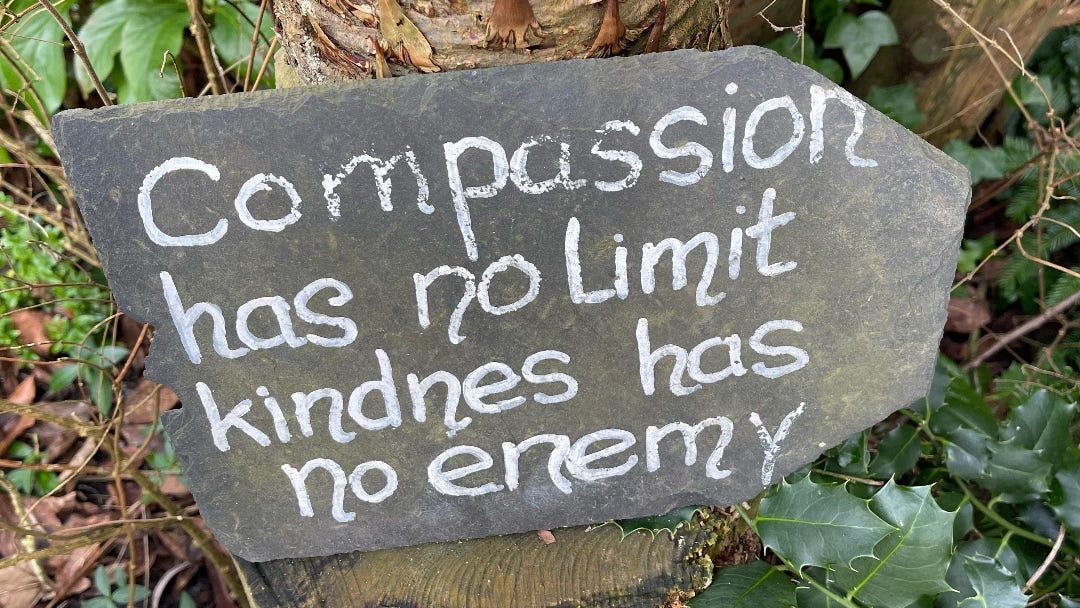
It's doubtful whether Charles of Orléans felt particularly love-struck amid the tumultuous events of the fifteenth century when he penned the earliest known Valentine's Day poem. However, the influence of his novelty would contribute to a tradition that is still going strong some 600 years later.
His verse began with the lines:
"Je suis desja d'amour tanné
Ma tres doulce Valentinée…"
Understandably, Charles may have grown weary of love, given life's challenges during the Hundred Years' War, a period vividly chronicled by Barbara Tuchman in her enthralling work, A Distant Mirror: The Calamitous 14th Century.
At the age of 14, Charles endured the loss of his mother, Valentina Visconti, who succumbed to illness just a year after the murder of his father. It was a tragic moment, compounded by the traditional oath of vengeance, that Charles and his siblings were made to swear at her deathbed to avenge their father's murder.
This brings me to his father, Louis I of Orléans, who was maybe not the most sympathetic character in French history and a figure of power and controversy. As the younger brother of King Charles VI, Louis faced the daunting task of assisting his mentally ill brother in ruling the kingdom, often collaborating with his sister-in-law, Queen Isabeau, to lead the country during his brother's frequent bouts of insanity. This task was challenging since, in France's pre-democracy days, others always claimed their rights to the throne.
For Charles's father, Louis, that meant a permanent struggle for control of France with the Duke of Burgundy, John the Fearless. He was not a true Democrat either; he was the type that could brag about shooting someone in clear daylight on 5th Avenue and getting away with it.
In this case, he chose the rue Vieille du Temple in Paris to commit a murder, proving that John was indeed fearless. He also understood that Louis was unpopular with the citizens of Paris due to his reputation for womanizing and his role in the Bal des Ardents tragedy. At this event, the king performed a dance with five members of the French nobility until Louis brought in a torch that created a fire that killed four of the dancers and nearly led to the death of the king.
Charles was 13 years old when John gave the orders for the assassination of his father. Louis was stabbed while mounting his horse by fifteen masked criminals. True to his nickname, John fearlessly bragged openly about his responsibility, leading soon to open warfare between the different factions of the royal family.
Political developments went lightning fast in 15th-century France. The assassination followed only three days after the contending Dukes had exchanged solemn vows of reconciliation before the court of France.
A few years later, when Charles was 16, he married Bonne of Armagnac, whom he later addressed as his Valentine in the lines I quoted in the opening. If you wonder if 16 wasn't a bit early to get married, it is good to know that this was already his second marriage. At the age of 12, he married his niece, who died in childbirth three years later. The daughter survived and would get half-siblings when Charles married for the third time more than a quarter century later.
These many years in between had everything to do with the renewal of the war with the Kingdom of England in 1415. Wars have always been bloody, and the hundred-year war is no exception. Consider the circumstances of Charles' capture by the English after the Battle of Agincourt as an example; although he was unhurt, he was an easy catch since he had been trapped under a massive pile of corpses.
It was the start of 24 years as a hostage in England. He wrote most of his poetry there, including the earliest surviving Valentine he wrote while being held in the Tower of London, starting a tradition that continues until this day.
I write this newsletter because I believe we can do better on this beautiful but fragile planet if we work together.
You can subscribe for free to receive this newsletter in your email, but please consider supporting this initiative by paying for a subscription. The paying subscribers make it possible for those who can't afford it to read for free.
After a Record-Hot January: Finding Balance Between Beauty and Climate Concerns
In a world where political tensions and the climate are in a neck-and-neck race to be first to pass tipping points with devastating global consequences, I escaped to nature's tranquility to continue my long-distance walk along the Dutch coastline. For several hours, I only saw beauty. Walcheren, one of the islands of Zeeland, welcomed the dawn of a new s…
Finding Beauty in Kindness: A Reflection on Compassion
When I opened the curtains this morning, I enjoyed the sight of the sun casting its warm glow on the sleepy streets of my village. Silhouetted against the vibrant backdrop of the dawn sky, unremarkable rooftops that I had never given particular attention to suddenly became essential in framing the daybreak's warmth and soft light.
Notes:
https://en.wikipedia.org/wiki/A_Distant_Mirror
https://en.wikipedia.org/wiki/Valentina_Visconti,_Duchess_of_Orléans
https://www.britannica.com/biography/Charles-duc-dOrleans-French-duke-and-poet
https://en.wikipedia.org/wiki/Charles,_Duke_of_Orléans









Wow. History repeats itself. And it appears there will always be a "John" somewhere. A noble tradition poetry in captivity.
Not sure what it says about me that I love that the history around the origins of the first Valentine contains so much bloody murder, but there you go ...